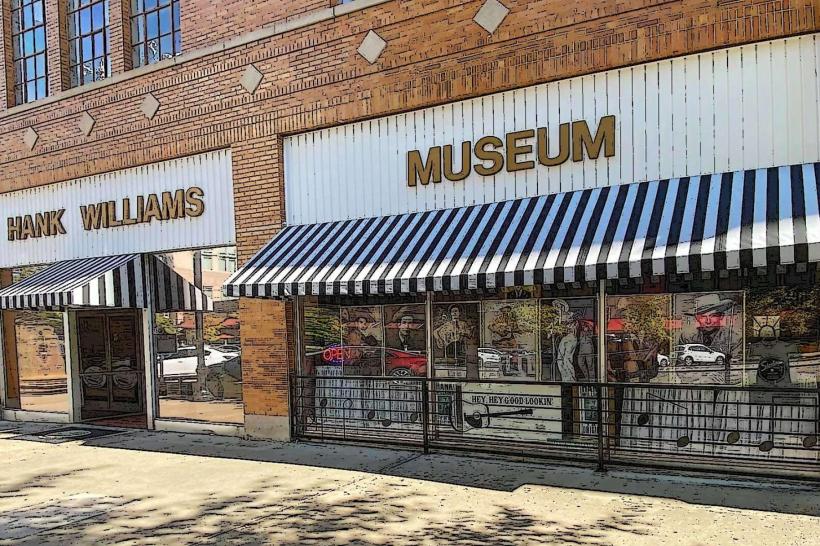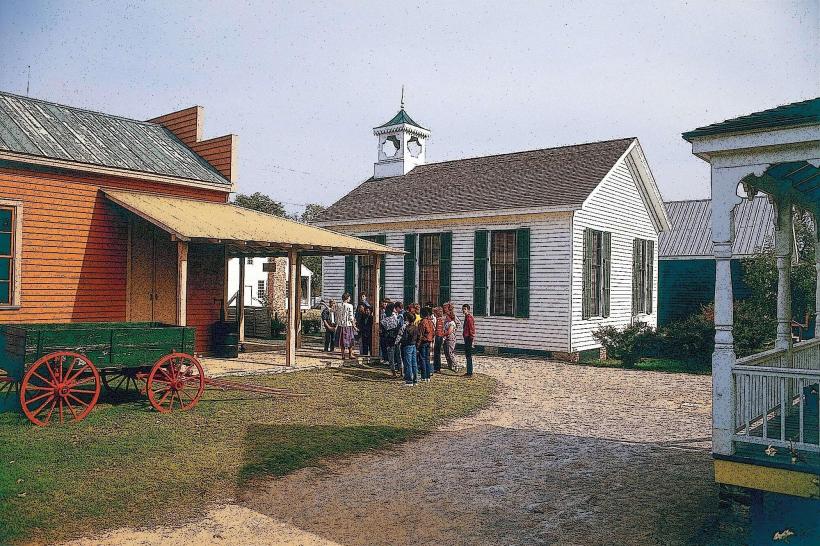Information
Landmark: W.A. Gayle PlanetariumCity: Montgomery
Country: USA Alabama
Continent: North America
W.A. Gayle Planetarium, Montgomery, USA Alabama, North America
The W.A. Gayle Planetarium is one of Montgomery’s most distinctive educational and cultural institutions, dedicated to astronomy, space science, and public learning. Opened in 1968, it was among the first major planetariums in the Southeast and remains an important part of the city’s cultural and academic landscape. It is named after William A. Gayle, a former mayor of Montgomery, in recognition of his support for civic projects that enriched the community.
Location and Setting
The planetarium is located in Oak Park, a large public green space not far from downtown Montgomery. Its circular, dome-roofed building reflects the architectural style of mid-20th-century planetariums, with a focus on functionality and projection capabilities rather than ornamental design. The surrounding park offers trails, shaded lawns, and recreation areas, making the planetarium visitable as part of a broader outing.
Facilities and Features
Star Dome: The centerpiece is a 50-foot dome theater equipped with an advanced star projector. Originally fitted with traditional optical-mechanical projectors, the facility has since been upgraded with modern digital systems capable of high-resolution, full-dome video projection.
Seating: The auditorium seats over 150 visitors, all oriented toward the dome ceiling to create an immersive, sky-like viewing experience.
Technology: Digital projection allows not only traditional star shows but also multimedia presentations covering astronomy, space exploration, and Earth sciences.
Programs and Offerings
The W.A. Gayle Planetarium serves both as an educational resource and a public attraction:
School Programs: One of its main functions is providing astronomy education to students across central Alabama. Thousands of children attend field trips here each year, where they learn about constellations, planets, galaxies, and current space missions.
Public Shows: Weekly and seasonal programs are open to the general public, featuring narrated star tours, themed astronomy films, and multimedia explorations of the universe.
Special Events: The planetarium frequently holds events tied to astronomical phenomena such as eclipses, meteor showers, or planetary alignments. Guest lecturers, astronomy clubs, and NASA partnerships add depth to these programs.
Custom Presentations: Shows are adaptable to various age groups, from simple “night sky” tours for younger children to advanced explorations of astrophysics for older students and enthusiasts.
Educational Role
As part of the Troy University system, the Gayle Planetarium functions not only as a public attraction but also as an academic tool. It supports science education throughout the region, making astronomy accessible and exciting in a way textbooks alone cannot achieve. Its mission emphasizes fostering curiosity, scientific literacy, and an appreciation of the universe.
Atmosphere and Visitor Experience
Attending a show inside the dome creates an immersive sense of wonder. The lights dim, and the ceiling becomes a night sky where stars, planets, and galaxies unfold in realistic motion. Unlike outdoor stargazing, the planetarium can simulate skies from any latitude, time period, or celestial event, offering visitors the chance to see both ancient constellations and future cosmic predictions.
Significance
The W.A. Gayle Planetarium represents Montgomery’s forward-looking side, balancing the city’s strong historical identity with a space devoted to science and exploration. For decades, it has inspired generations of students and visitors to look beyond Earth and imagine humanity’s place in the cosmos.
It remains one of the region’s most enduring educational landmarks-both a scientific classroom and a place of awe, where the night sky becomes an accessible and unforgettable experience.




















